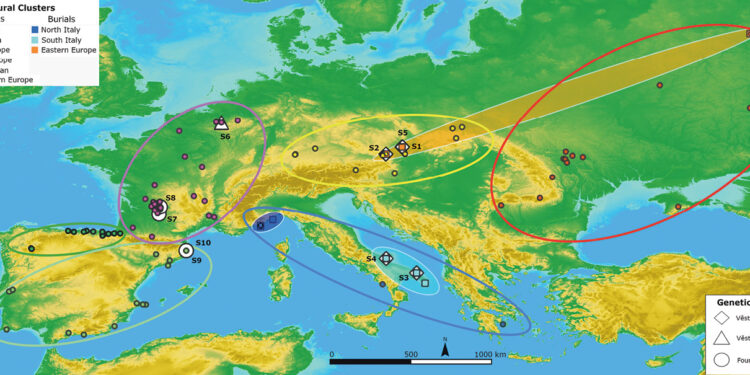The differences noted were clear enough that the researchers were able to identify nine distinct clusters of sites with unique associations of personal ornamentation across Europe. Six of these groups were identified at occupation sites, while three were based on burial sites. The variations in personal ornamentation were particularly evident at burial sites, perhaps because these were spaces where cultural identities were delineated more clearly than they were in life. The data reveals, too, that some interaction and exchanges did occur between these culturally distinct groups.
One of the main aims of the research was to test whether diversity in material culture correlates directly to geographical distance (a theory known as ‘isolation-by-distance’) or whether other factors played a significant role. The research confirmed that, although physical distance did impact cultural practices, this alone could not account for all of the differences observed. Other factors that also played a role include time, availability of materials, social status of individuals, site function, and cultural exchange with other groups.
The study compared the findings, as well, with existing palaeo-genomic data from the Gravettian. This revealed that many of the clusters identified did line up with cultural boundaries indicated by genetic data. However, the material culture painted a more complex picture. In some cases, people with distinct genetic backgrounds seem to have shared material culture; in others, the personal ornaments indicate that people belonged to different cultural groups despite sharing similar genetic backgrounds. Analysis of the personal ornaments also identified three cultural groups in areas for which there is currently limited genetic data available.
This research demonstrates that Gravettian Europe was a more complex cultural landscape than we previously understood. The database highlights, too, the rich diversity of the period’s material culture and the skills of the hunter-gatherer artisans who made all of these beautiful objects. Perhaps even more important are the connotations the study has for future research. The results demonstrate the potential of personal ornaments as a source of information about cultural boundaries in the Palaeolithic. They also contribute to ongoing debates about the relationship between material culture and palaeogenomic research, showing that the best results come from integrating these approaches. The research serves as a reminder, too, that culture does not always equal genetics, and that cultural identities and social relationships are highly complicated things, in the past just as much as today.
Text: Amy Brunskill / Images: Baker et al., Nature Human Behaviour
Source link : https://the-past.com/news/identifying-cultural-groups-in-gravettian-europe/
Author :
Publish date : 2024-05-20 07:00:00
Copyright for syndicated content belongs to the linked Source.




